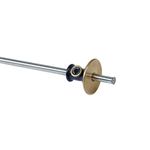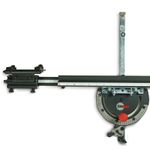Protect Your Hearing in the Shop
Choose ear protection that's comfortable, and learn how to use it correctly
Synopsis: The biggest challenge makers of hearing protectors face is making the devices comfortable enough that people will actually use them. This article details how the ear works, explaining hearing loss and noise-reduction methods. William Duckworth of Fine Woodworking shows lists the decibel levels for most shop tools and investigates a variety of products available for hearing protection, including custom-made earplugs.
For nearly 20 years I was exposed to the often painfully loud whines of tablesaws and routers, banging hammers, whirring planers and the assorted din you hear daily in a small cabinet shop. Did I wear hearing protection? Well, some of the time, but more often than not, no. I’d characterize those habits more as careless than as cavalier. I had two sets of earmuffs—one good pair for an employee and one fairly cheap set that I’d use on occasion. What I didn’t like about those earmuffs was that they just weren’t comfortable. The cushion quickly lost its spring and softness, affecting the seal; the plastic covering around the cushion was scratchy and hot, and it stuck to sweaty skin on warm days.
After speaking with a number of people in the hearing conservation industry, from makers of protection devices to hearing-aid suppliers, it turns out that my experience was not uncommon. The biggest challenge many makers of hearing protectors face is making devices comfortable enough that people will actually use them. Another thing I learned is that the science behind the effort to provide good hearing protection can be quite complicated. But like most other fields of study, you don’t have to understand all the science to benefit from its hard-won results. With that said, it may help to put some of that science into perspective.
Hearing loss—what is it, and what causes it?
The onslaught of damaged hearing can result from medical problems, including illnesses. But the most common cause of damage is being too close to too much loud noise for too long. How much is too much? Average daily noise levels of 80 decibels and lower pose no threat of hearing damage. Noise levels of 90 decibels and higher can be hazardous, and several machines in a woodshop exceed those levels (see the graphic at right). The duration of exposure has as much to do with it as the decibel level. Noise-induced damage is cumulatively degenerative and mostly irreversible.
From Fine Woodworking #152
For the full article, download the PDF below:
Fine Woodworking Recommended Products

Veritas Standard Wheel Marking Gauge

Compass

Sawstop Miter Gauge























Log in or create an account to post a comment.
Sign up Log in